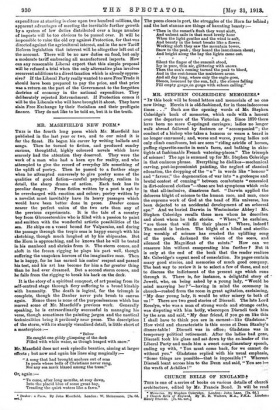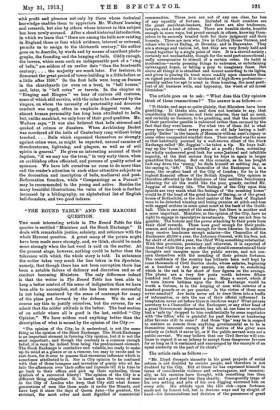CHURCH BELLS OF ENGLAND.t THIS is one of a series
of books on various details of church architecture, edited by Mr. Francis Bond. It will be read
• Memories. By Stephen Coleridge. London : John Lane. [7s. 6d.] t Church Bells of England. By H, B. Waiters, M.A., F.B.A. .London t Henry Frowde. [7s. 6d. net.]
with profit and pleasure not only by those whose technical knowledge enables them to appreciate Mr. Walters' learning and research, but also by others whose interest in this subject has been newly aroused. After a short historical introduction, in which we learn that " there are among the bells now existing in England three or four which evidence, internal or external, permits us to assign to the thirteenth century," the author goes on to describe, by words and by means of excellent photo- graphs, the founding and the banging of bells. Oddly enough, the towers, which seem such an indispensable part of a "ring of bells," are seldom of an earlier date " than the fourteenth century ; . . . the majority are much later. For instance, in Somerset the great period of tower-building is a little before or a little after 1500." So the first bells were hung on frames in the churchyards (or even on a tree), in "bell houses," and, later, in "bell cotes" or turrets. In the chapter on "Ringing and Ringers" we bear of curious old customs, some of which still survive, with the rules to be observed by the ringers, on whom the necessity of punctuality and decorous conduct was urged, often in emphatic doggerel verse. An almost human personality has long been attributed to bells, but, unlike mankind, we only bear of their good qualities. Mr. Walters says, " It was also believed that bells shivered and quaked at crimes or disasters. When Archbishop Becket was murdered all the bells of Canterbury rang without being touched. . . . Bells which expressed themselves so strongly against crime were, as might be expected, natural enemies of thunderstorms, lightning, and plagues, as well as of evil spirits in generaL" He gives an interesting account of their baptism, "if we may use the term," in very early times, when an archbishop often officiated, and persons of quality acted as sponsors. We have left ourselves no room to do more than call the reader's attention to such other attractive subjects as the decoration and inscription of bells, mediaeval and post- Reformation founders, while "Campanology as a Pursuit" may be recommended to the young and active. Besides the many beautiful illustrations, the value of the book is further increased by a bibliography, an alphabetical list of English bell-founders, and two good indexes.



















































 Previous page
Previous page